Culture and History
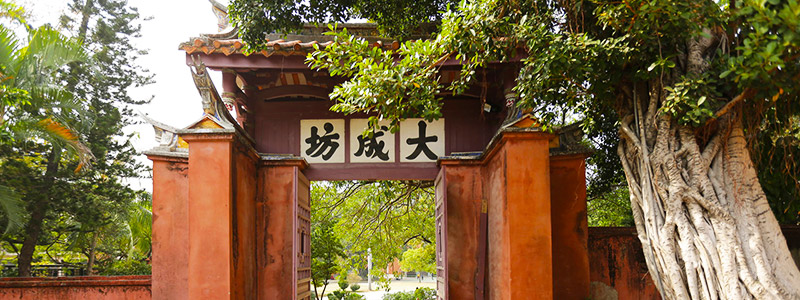
The City in the Southern Taiwan with A Long History That Never Fades
Tainan was the first city to be developed in Taiwan. The charm of culture formed over more than 300 year exudes from the lanes and alleys, attracting visitors back time and again. Turn a corner and you will see the marks left behind by the people who went before and discover hidden stories. Visit the city gates and see how they developed and evolved; of course, historic sites, traditional buildings and the appearance of their surrounding areas play an important role in the culture of this ancient capital; through activation and reinvigoration of space, local art, industry and tourism culture have grown together; the old houses on the old streets reflect the past times as well as the living spaces and memories of ordinary people. Let these stories of the past and new soul accompany you as you search for the timeless charm of Tainan.
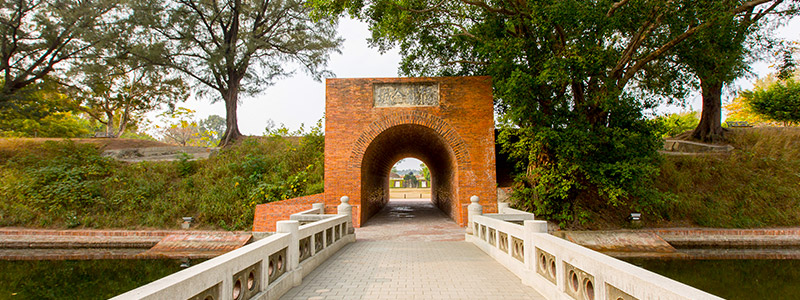
City gate stories, opening to the past and future
Built in the reign of the Yongzheng Emperor of Qing dynasty (1722-1735), Tainan Walled City was where the city of Tainan originated. 14 gates were built to protect the city. In the Japanese Colonial Period some of the gates were demolished when new roads were built; by 1917 the city walls were almost all gone; through later rescue and rectification efforts, four gates were saved and stand to this day: Duiyue Gate (duiyuemen), Great East Gate (dadongmen), Great South Gate(dananmen) and Little West Gate(xiaoximen).
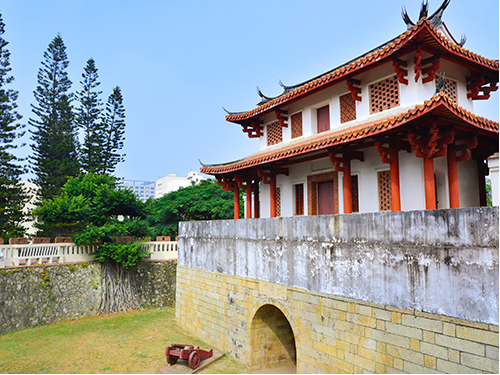
Great South Gate
The Great South Gate is also called Ningnan Gate (Peaceful South Gate). It stands in Nanmen Park on Nanmen Road in Zhongxi District. It was built in 1725 and is a city-listed historic site. Ningnan Gate has the only surviving outer wall in Taiwan; it was re-built as it originally was in 1977. The inner gate has the three characters for Ningnan Gate on it and the outer gate bears the characters for Great South Gate.
Location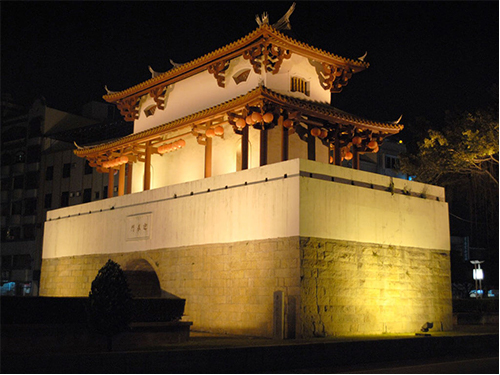
Great East Gate
The Great East Gate is also called Yingchun Gate (Welcoming Spring Gate); it was built in 1725 and is a city-listed historic site. It was built using slabs of granite. The arch on the west side bears the characters Yingchun Gate while the stone plaque on the east side has Donganmen (Eastern Peace Gate.)
Location
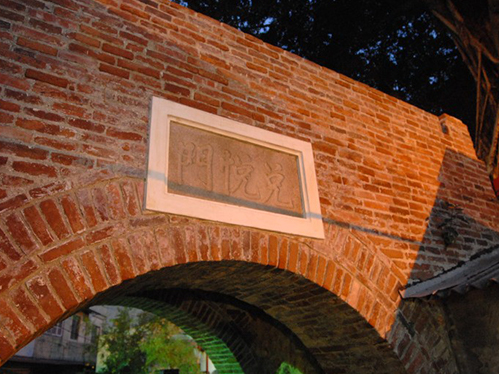
Duiyue Gate
Duiyue Gate is located at the junction of Wenxian Road and Xinyi Street; it was built in 1835 and is a city-listed historic site. Duiyue Gate was one of the three gates that once extended from Little West Gate to the outer wall of Little North Gate.
Location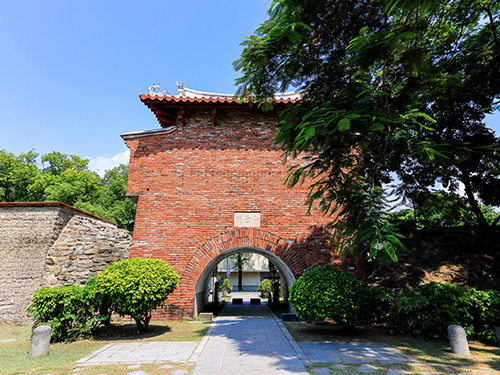
Little West Gate
Little West Gate was first erected in 1775 during the reign of the Qianlong Emperor and was originally called Qingshui Gate (Clear Water Gate). Today's Little West Gate was built in 1788 when the city walls were replaced with earth walls and named Jingpo Gate. It was demolished and relocated to the campus of National Cheng Kung University in 1970 when road widening took place.
Location
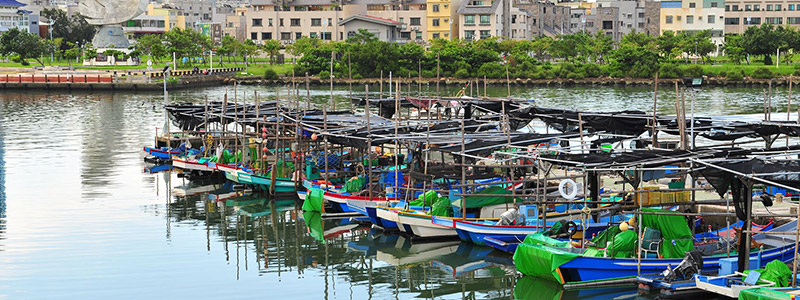
Ancient Castles and Canals Witness The Civilization Evolution of Taiwan Prefecture
Canal networks are highly associated with the flourishing and decaying of a city's civilization. Canals not only contribute to the development of Taiwan Prefecture, but also advance its whole society and economy. And many foreign firms at that time are trading companies that were invested by powerful western countries from 1858 to 1860. Back then, those firms existed prominently almost everywhere and now are important heritage sites providing Tainan with the very precious substance of its culture.
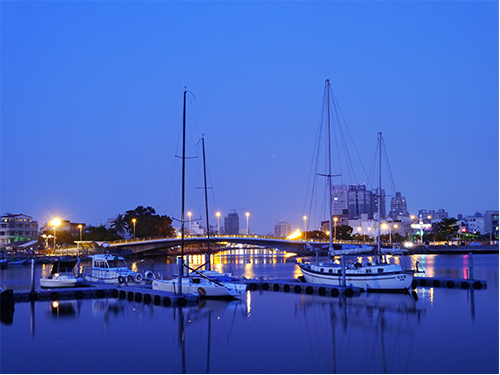
Tainan Canal
What is referred to as Tainan Canal today means the new canal built by the Japanese in 1922; another canal built during Daoguang Emperor of the Qing dynasty is known as the Old Canal and was an important navigation channel in the development of Tainan that laid the foundation for the city's prosperity. Boat trips can be taken on the canal in a flat-bottomed boat from which visitors can see varied scenery of Tainan from a different angle.

Foreign Firms
The well-known Old Tait & Co. Merchant House (British) and Julius Mannich & Co. (German) are both located in Anping District near the sea harbor. The foreign trading house buildings include offices, residence and warehouse and most have a colonial cloister design; most have been converted into exhibition halls or restaurants.
Location of Tait & Co. Merchant House Location of Julius Mannich & Co.
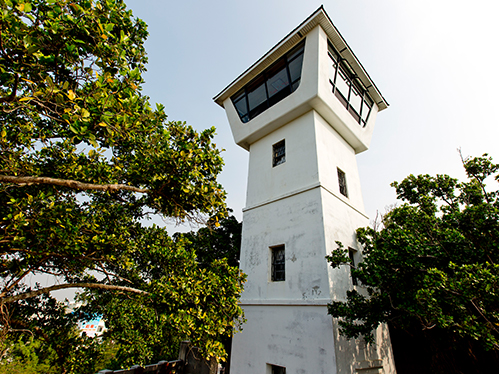
Anping Old Fort
Anping Fort was built between 1624 and 1634 by the Dutch. As Taiwan was called Taiwan City, Anping Fort was also called King City, Chikan City and Anping City. After being rebuilt in the Japanese Colonial Period, it was named Anping Fort; it is a national historic site.
Location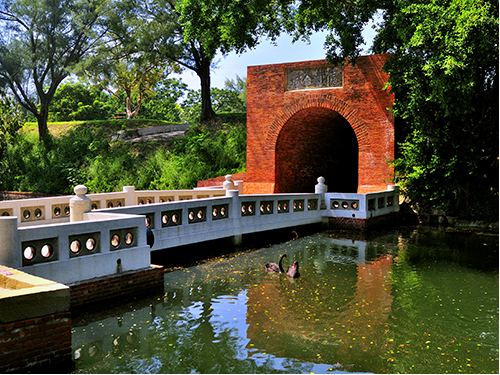
Eternal Golden Castle
Eternal Golden Castle also named Erkunshen Fort and Anping Great Fort, it was built in 1874. And it was Taiwan's first western style fort and is a national historic site.
Location
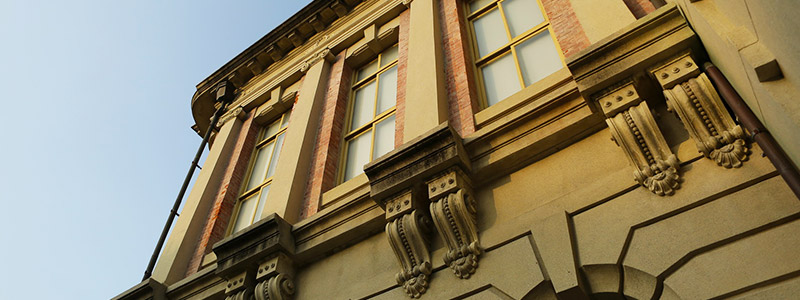
Old Town VS Modern City: Now and Then of Old Houses
Tainan is an ancient city that has passed through the Dutch occupation, the Ming-zheng period, Qing Dynasty rule, and the Japanese Colonial Period over several centuries. Tainan's grace and diverse charms never fade, in fact the city gets better with age. With its many historic buildings, old houses and old streets, Tainan has attracted many artists and civic organizations to take up residence; combining art and cultural and creative industries, the shoots of new life have emerged from once desolate scenes.
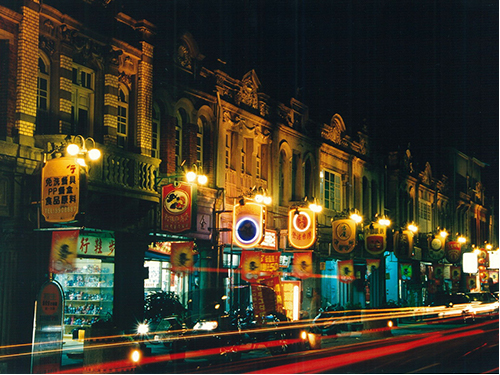
Old Streets
Old streets are microcosms of great times and reflect the living space and memories of ordinary people. Tainan's famous old streets include Anping Old Street, Five Channels Old Street, Xinhua Old Street, Shizida Streets (The Great Cross Street), Houbi Jingliao Old Street and Yanshui Qiaonan Old Street. Each old street has its own old-time charm.
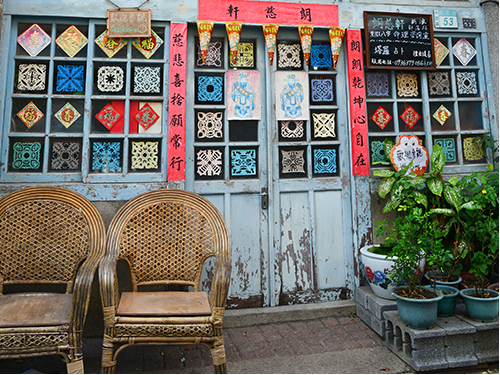
Historic Streets And Old Houses
Many historic buildings or old buildings with cultural value such as Tainan Public Hall, Taiwan Black-foot Disease Socio-Medical Service Memorial House, Sio Police Station, Tsung-Yeh Arts and Cultural Center, and the old Minnan style houses that can still be seen on the streets and lanes form Tainan's unique landscape. The new-life-for- old-buildings movement led by civic groups that emerged in 2008 has allowed these old buildings to adapt to the changing times and given them new life.
